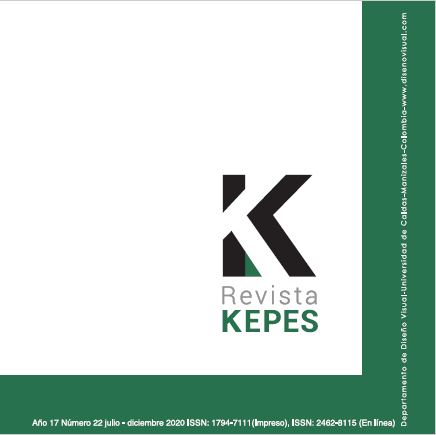Authors
Abstract
The status of OVAs (domestic editions of anime) is explored in this article as a hinge format between the narrative maturity of anime in the 1970s and the complex storytelling from the 1990s onwards. The methodology used is based on a narratological analysis inspired by the historical poetics of cinema carried out by David Bordwell. Thus, taking into account the categories of knowledgeability, self-consciousness and communicativeness, in the results and conclusions it was found that the presumed narrative simplicity attributed to anime is not such, and that the OVAs analyzed —Twilight Q: Meikyū Bukken Fairu Go San Hachi (Mamoru Oshii, 1987), Gunbuster (H. Anno, 1988-89) and Otaku no Video (T. Mori, 1991)— stand as key milestones in the establishment of another type of storytelling in the contemporary Japanese animation industry, one that, far from being formulaic, corresponds to the stimulating international narrative experimentation of the so-called puzzle films.
Keywords
References
Backstein, K. (2004). Flexing Those Anthropological Muscles: X-Files, Cult TV, and the Representation of Race and Ethnicity. En S. Gwenllian-Jones y R. E. Pearson (Eds.), Cult Television (pp. 115-145). Minneapolis, USA: University of Minnesota Press.
Bordwell, D. (1996). La narración en el cine de ficción. Barcelona, España: Paidós.
Buckland, W. (Ed.) (2009a). Puzzle films: complex storytelling in contemporary cinema. Malden, Estados Unidos: Wiley-Blackwell.
Buckland, W. (2009b). “Introduction: Puzzle Plots”. En W. Buckland (Ed.), Puzzle films: complex storytelling in contemporary cinema (pp. 1-12). Malden, USA: Wiley-Blackwell.
Clements, J. (2013). Anime: A History. London, UK: BFI & Palgrave Macmillan.
Condry, I. (2013). The Soul of anime: collaborative creativity and Japan’s media success story. Durham, USA: Duke University Press.
Cubbison, L. (2005). Anime Fans, DVDs, and the Authentic Text. The Velvet Light Trap, 56(1), 45-57.
Denison, R. (2016). Anime: A Critical Introduction. Londres, UK: Bloomsbury
Elena, A. (1993). En el país de Godzilla: una introducción al cine japonés. Nosferatu. Revista de cine, 11, 4-13.
Elena, A, (2000). La puerta del infierno: tres notas sobre la circulación del cine pornográfico. Secuencias, 12, 7-22.
Galbraith, S. (2009). Cine japonés. Köln, Alemania: Taschen.
Gan, S. H. (2009). To Be or Not to Be. The Controversy in Japan over the ‘Anime’ Label. Animation Studies, 4, 35-43.
Hernández-Pérez, M. (2017). Manga, anime y videojuegos. Narrativa crossmedia japonesa. Zaragoza, España: Prensas Universitarias de Zaragoza.
Jenkins, H. (2008). Convergence culture: la cultura de la convergencia de los medios de comunicación. Barcelona, España: Paidós.
Kinsella, S. (2000). Adult manga: culture and power in contemporary Japanese society. Richmond, USA: Curzon.
Kiss, M. & Willemsen, S. (2017). Impossible Puzzle Films. A Cognitive Approach to Contemporary Complex Cinema. Edinburgh, UK: Edinburgh University Press.
Koulikov, M. (2015). Researching the Business of Anime. Resources and Thoughts. Recuperado de https://animemangastudies.wordpress.com/2015/01/02/researching-the-business-of-anime-
resources-and-thoughts/
Laybourne, K. (1979). The animation book: a complete guide to animated filmmaking, from flip-books to sound cartoons. Nueva York, USA: Crown Publishers.
Loriguillo-López, A. (2019). Genealogía de las prácticas comunicativas de los “otaku”: evolución de la tecnología audiovisual y de la cultura fan en el consumo del “anime”. Arte, Individuo y Sociedad, 31(4), 917-930.
Masuda, H., Sudo, T., Rikukawa, K., Mori, Y., Ito, N. & Kameyama, Y. (2018). Anime Industry Report 2017 Summary. Recuperado de http://aja. gr.jp/?wpdmdl=1202.
McCrea, C. (2008). Explosive, Expulsive, Extraordinary: The Dimensional Excess of Animated Bodies. Animation, 3(1), 9-24.
McDonald, K. (1989). Popular Film. En R. Gid Powers y H. Kato (Eds.), Handbook of Japanese Popular Culture (pp. 97-126). Westport, USA: Greenwood Press.
Mckevitt, A. C. (2010). ’You Are Not Alone!’: Anime and the Globalizing of America. Diplomatic History, 34(5), 893-921.
Napier, S. J. (2001). The Frenzy of Metamorphosis. The Body in Japanese Pornographic Animation. En D. Washburn & C. Cavanaugh, Carole (Eds.), Word and Image in Japanese Cinema (pp. 342-65), Cambridge, Estados Unidos: Cambridge University Press.
Panek, E. (2006). The Poet and the Detective: Defining the Psychological Puzzle Films. Film Criticism, 31, 62-88.
Pett, E. (2016). ‘Blood, guts and Bambi eyes’: Urotsukidoji and the Transcultural Reception and Regulation of Anime. Journal of British Cinema and Television, 13(3), 390-408.
Piñón Perales, F. (2010). La representación grotesca en el anime. Perífrasis, 2(1), 95-113.
Richie, D. (2005). A Hundred Years of Japanese Film: A Concise History, with a Selective Guide to DVDs and Videos. Tokio, Japón: Kodansha International.
Sevakis, J. (2007). Twilight Q. Recuperado de http://www.animenewsnetwork. com/buried-treasure/2007-11-08
Steinberg, M. (2012). Anime’s Media Mix: Franchising Toys and Characters in Japan. Minneapolis, USA: University of Minnesota Press.
Tessier, M. (1999). El Cine japonés. Madrid, España: Acento.
Thanouli, E. (2009). Post-classical cinema: an international poetics of film narration. Nueva York, Estados Unidos: Wallflower Press.
TV Tropes. (s.f.). Gainax Ending. Recuperado de http://tvtropes.org/pmwiki/ pmwiki.php/Main/GainaxEnding.
Viz Communications. (1996). Otaking. Toshio Okada at Anime America ’96. Recuperado de http://web.archive.org/web/20001217033900/http://www.j-pop.com:80/anime/archive/feature/04_gal_999/otaking.html
Wada-Marciano, M. (2012). Japanese Cinema in the Digital Age. Honolulu, Estados Unidos: Hawai’i University Press.
Williams, K. L. (2006). The Impact of Popular Culture Fandom on Perceptions of Japanese Language and Culture Learning: The Case of Student Anime Fans. University of Texas, UEA.
Zahlten, A. (2007). The role of genre in film from japan: Transformations 1960s-2000s. Johannes Gutenberg-Universitaet Mainz, Alemania.
Zahlten, A. (2014). Media Mix and the Metaphoric Economy of World. En D. Miyao (Ed.), The Oxford Handbook of Japanese Cinema (pp. 438-456). Oxford, Reino Unido: Oxford University Press.
Zahlten, A. (2017). The End of Japanese Cinema: Industrial Genres, National Times, and Media Ecologies, Durham, USA: Duke University Press.

 pdf (Español (España))
pdf (Español (España))
 FLIP
FLIP






















